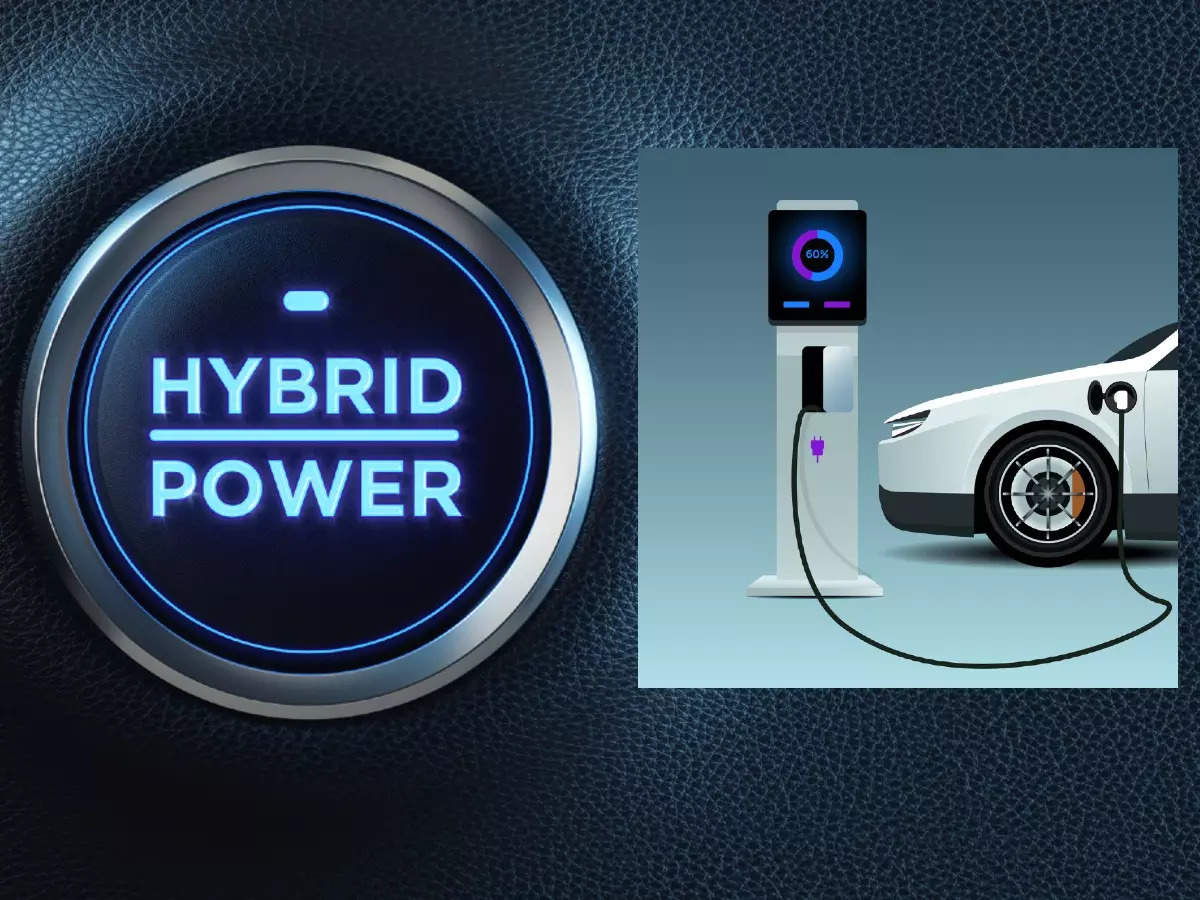
Electric vehicles are being overtaken by hybrids by a mile in India. In sharp contrast to global trends, Indian customers prefer hybrid vehicles, which have a blend of combustion engine and electric motors, to pure-play electric cars that are powered entirely by batteries or BEVs. They like to settle for an intermediate technology and familiarise themselves with alternative fuel before going all out for EVs. Car companies, quick to recognise this trait, have been luring the Indian clientele with 51 new model launches of hybrids compared with just 29 for EVs in 2023. Can things change for EV? Hybrids have become favourites due to their reliability, affordability and lower maintenance cost. Meanwhile, limited range, lack of charging infrastructure and expensive insurance are concerns that the EV ecosystem needs to aggressively address to make its India ride smoother.
Hybrids are cheaper, too. The average retail price of a hybrid is INR 16.98 lakh while that of an EV is INR 17.71 lakh, according to market researcher Jato Dynamics. No wonder hybrids accounted for 12.6% of total passenger vehicle (PV) sales in January-November 2023, while the share of EVs was only 2.3%.
“Hybrids may continue to play a crucial role as a ‘stepping stone’ or as an intermediate technology towards a full EV adoption, helping to educate and familiarise consumers with alternative fuel technologies before they transition completely to electric mobility,” says Ravi Bhatia, president, Jato Dynamics.
Pravin Shah, an IT engineer in Mumbai, is one of those who got swayed by the hybrids. He had initially thought of buying an electric car, the Tata Nexon Fearless Long Range, priced at INR 18.69 lakh (ex-showroom). Instead, the 35-year-old eventually opted for a hybrid, the Maruti Suzuki Grand Vitara Zeta, priced at INR 18.33 lakh.
“The challenges of charging infrastructure and lower residual value made me go for a hybrid,” says Shah, who says he will switch to electric in three-four years. While hybrids enjoy an edge in the Indian market, rapid advancements in EV technology could soon bridge the cost gap, say experts.
EV has already turned a corner. Despite Shah’s reservations, the Nexon EV outshines a strong hybrid like the Grand Vitara on fuel cost—the difference works out to as much a 80% over two years, according to Jato Dynamics. There is a further 36% reduction of cost in maintenance and repairs. It is, therefore, cheaper to maintain an EV in the long run.
The Indian EV market has seen an over 100% growth in demand since 2017. In 2023, EV sales doubled to 89,137 units in JanuaryNovember 2023, from 44,489 in the same period in 2022. However, sales of EVs in India are expected to moderate in 2024 because of a high base, Tata Motors told ET in a report on Friday. The leader in EVs, Tata Motors says annual sales of electric cars will touch 1 million units by 2028, thanks to new launches and expansion of charging infrastructure. EVs, it estimates, will account for 25% of its sales by 2027 and 50% by the end of the decade.
BRAND STRATEGY
Automobile majors are adopting various strategies for EVs. Tata Motors, Mahindra and MG Motor have a long-term focus on EVs. Several electric players like US based Tesla and Fisker and Vietnambased VinFast are firming up their plans for India. VW and Skoda are planning EV launches in the next two-three years. Meanwhile, Maruti Suzuki, which is a leader in internal combustion and hybrid cars, and Toyota, which has launched hybrid models as an intermediate step, will eventually launch electric vehicles.
Companies like Hyundai say they will introduce products and technologies based on customer and market demands. “We provide various options, such as petrol, CNG, turbo, diesel and electric powertrains, and manual, intelligent, automatic and dual clutch transmission. We are now at the forefront of a transition phase, offering multiple technologies and preparing for future advancements,” says Tarun Garg, COO, Hyundai Motor India.
Hyundai launched the fully electric SUV Kona in India in 2019 and the long-range EV SUV, Ioniq 5, with a range of 631 km, in 2023. The Ioniq5 has sold 1,100 units so far. “We are committed to introducing more EVs as our strategy in India is focused on them in line with government policies,” says Garg. The Korean major plans to invest INR 20,000 crore in Tamil Nadu towards capacity expansion, new product development and EV battery pack assembly plant.
MG Motor is the second largest electric passenger vehicle seller in India. “Our flagship EV model, MG ZS, and Comet have received positive response, with over 18,000 units sold till date. Around 30% of our sales comes from EV models,” says Gaurav Gupta, deputy MD, MG Motor India.
Since an expansion of charging infrastructure is crucial for EVs to become mainstream, MG India partnered with a campaign called Shoonya–Zero Pollution Mobility by NITI Aayog and installed more than 12,000 charging touch points, including public and home chargers, across the country, adds Gupta.
Hyundai has over 1,100 functional charging stations, and continues to grow this network.
NO SINGLE ANSWER
Many car manufacturers swear that EV is the technology of the future as it will help in meeting COP26 goals, and in going carbon-neutral in the long term. However, not everyone in the automotive industry is convinced that EV is the solution, or rather the only solution.
“Electricity generation in India is largely through thermal means and hence EVs don’t really help in furthering COP26 objectives. Also, there are functional transportation needs in a growing economy. EVs, with high cost of acquisition and lack of charging infrastructure, have limits in addressing this requirement,” says a senior official of a car company, who did not wish to be identified.
Akio Toyoda, chairman of Toyota Motor Corporation, recently said that the EV industry was coming to realise that there isn’t a single answer to reducing carbon emission. Toyoda could be right. While the auto industry continues to pursue electrification, EVs will account for only 25% of PVs in India by 2030, and will coexist with other technologies such as ICE and plug-in hybrids, says Bhatia.
At the annual convention of the Society of Indian Automobile Manufacturers recently, PM Narendra Modi, too, encouraged the auto industry to move towards decarbonisation through a range of powertrain technologies. “India needs alternate fuel technologies,” says Vikram Gulati, country head and executive vice-president, Toyota Kirloskar Motor.
“We need to support all sustainable fuel technologies (hybrids/ ethanolblended, hydrogen and CNG) in a proportionate manner so that we are able to displace petrol and diesel.” Regulatory nudges –– such as CAFE or corporate average fuel efficiency that requires companies to lower greenhouse gas emissions and increase fuel efficiency–– are pushing manufacturers to launch more models in different segments.
RC Bhargava, chairman of the country’s largest car maker, Maruti Suzuki, says hybrids are much more acceptable to the customer as it is cleaner than EVs. He says, “We need to have multiple technologies at different price points catering to a diverse set of customers to cut down the carbon footprint.” Shashank Srivastava, senior executive director of Maruti Suzuki, says the company will follow customer preferences “even as we meet regulatory requirements”.
The future, it seems, will be powered by many powertrains.















